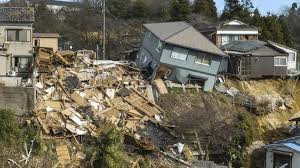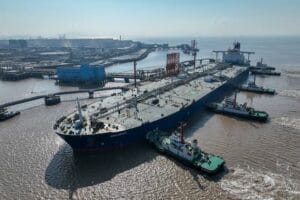Devastating quake strikes Japan’s west coast, rescue teams race against time

In the aftermath of a powerful 7.5 magnitude earthquake that struck Japan’s Noto Peninsula in the Ishikawa prefecture on Monday, scenes of destruction unfolded along the western coast. Rescuers are in a ‘battle against time’ to save residents trapped in collapsed buildings, with the death toll already reaching at least 48 people.
The quake triggered multiple aftershocks and set off tsunami alerts, felt as far away as eastern Russia. Despite Japan’s Meteorological Agency lifting all tsunami advisories along parts of the western coast on Tuesday, limited access to the northern part of the Noto Peninsula persists more than 24 hours after the initial quake.
Prime Minister Fumio Kishida, addressing the situation after a disaster emergency meeting, mentioned that a destroyed road hampers access to the affected area. Helicopters flying over the peninsula reported damaged roads, landslides, and large fires, requiring a mobilization of various means of transport.
Wajima, a central city with over 27,000 residents, appears to be among the worst-hit areas. Officials confirm 15 deaths in Wajima, where fires ravaged over 100 shops and houses following the quake. Tsunami waves of around 1.2 meters added to the city’s challenges.
Evacuation efforts led more than 30,200 people to seek shelter in 336 evacuation centers in Ishikawa. Although the extent of damage is still being assessed, it is not on the scale of the 2011 quake and tsunami disaster.
Prime Minister Kishida emphasized the urgency of rescue efforts, stating, “Rescue efforts are a battle against time, especially for the victims of collapsed buildings.” Japan’s Self Defense Force, along with police and fire emergency teams, are engaged in overnight rescue operations.
Reports indicate an elderly man pulled from a collapsed house succumbed to the quake’s impact. Damaged roads hinder health officials in Suzu from reaching wounded patients, highlighting the broader challenges in the affected region.
Power outages affect 45,700 households in Ishikawa, while no abnormalities were reported at nuclear plants near the quake’s epicenter. Bullet train services, halted during the quake, resumed after a nearly 11-hour delay.
The Japan Meteorological Agency issued a “major tsunami warning,” the first since 2011, initially for Noto but later downgraded it to a “tsunami warning.” The threat diminished, and warnings were eventually canceled.
While smaller aftershocks persist, seismologists, including Susan Hough from the US Geological Survey, warn of potential hazards for months. The earthquake is described as the largest in the region, posing ongoing challenges for residents unfamiliar with seismic events of this scale.












